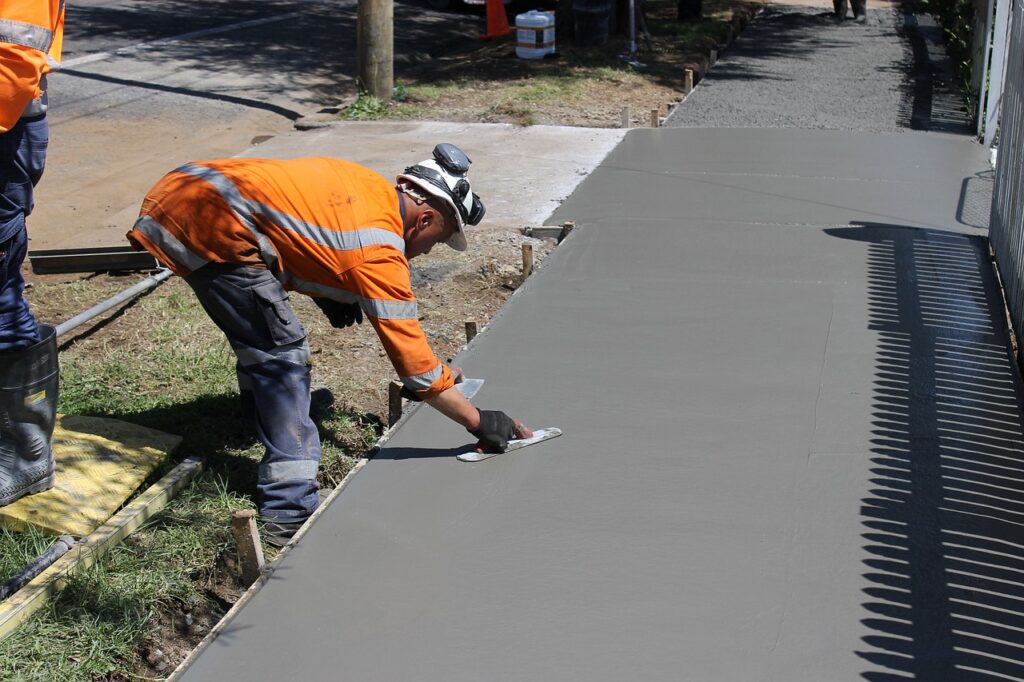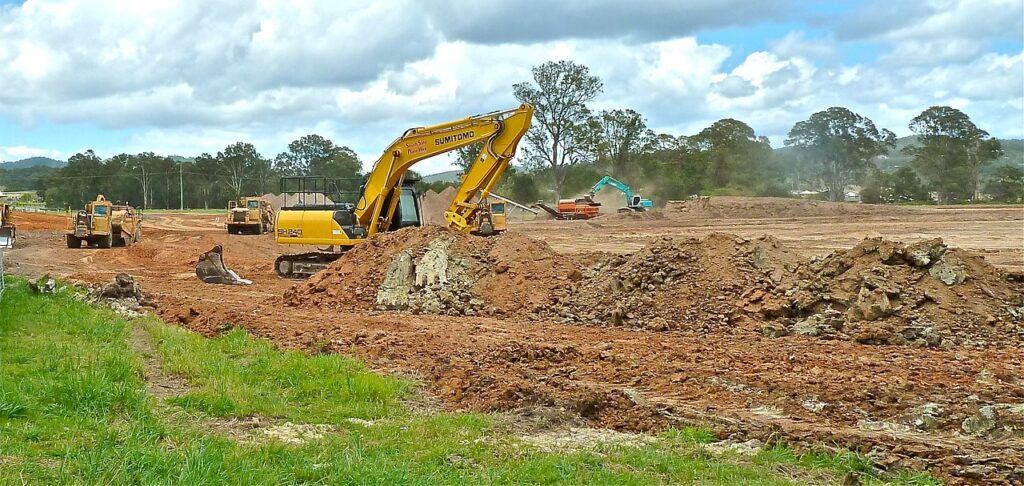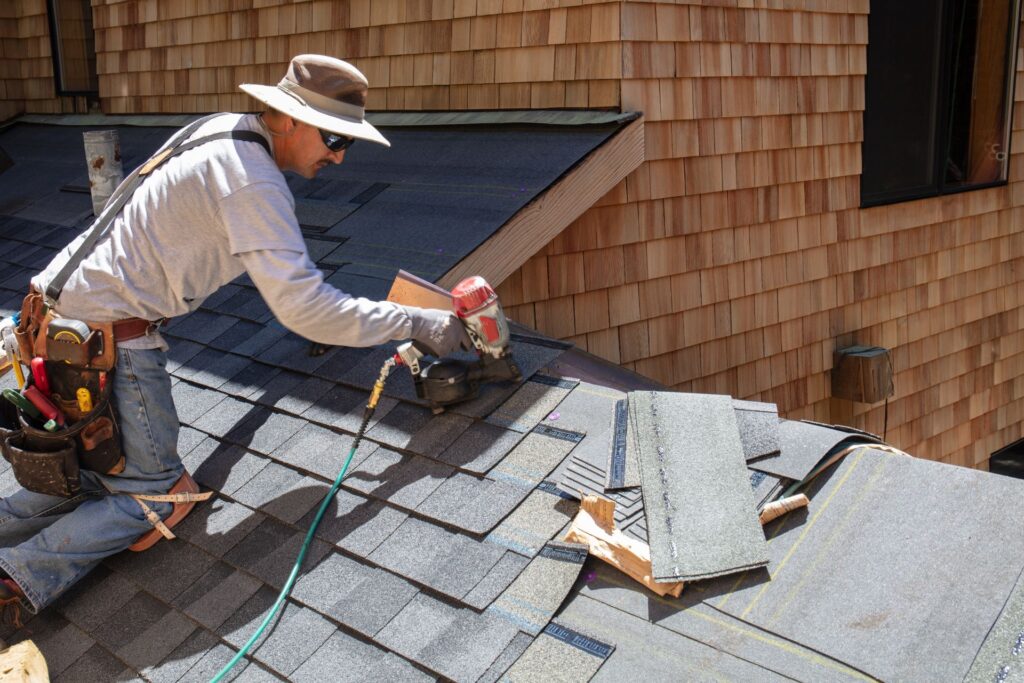Concrete, the backbone of construction projects, is often the silent contributor to a structure’s strength and durability. However, understanding the intricate details of concrete pricing, specifically, the cost per cubic meter in New Zealand is essential for informed decision-making in both professional and DIY construction projects. In this comprehensive guide, we will delve into the multifaceted world of concrete pricing, shedding light on crucial considerations for your projects.
The average cost of concrete per cubic meter in New Zealand is generally between $200 to $300 per cubic meter. However, prices can vary depending on several factors, such as the type of concrete, the quantity needed, and the location of the supplier.
- Why Does Concrete Price Vary?
- Raw Materials And Their Impact On Pricing NZ
- Labour Costs And Their Contribution
- Market Demand And Supply Dynamics In NZ
- Environmental Factors Affecting Concrete Production Costs In NZ
- Concrete Mix Design And Its Influence On Cost
- Calculating Concrete Price Per Cubic Meter In NZ
- Regional Variances In Concrete Prices
- Tips For Cost Optimization
- Common Misconceptions About Concrete Pricing
- Case Studies: Real-World Examples
- Future Trends In Concrete Pricing In NZ
- FAQs: A Guide to Understanding Costs Per Cubic Meter in NZ
- Conclusion
- Find A Builder Connect Approved Concrete Company Near You!
Why Does Concrete Price Vary?
The price of concrete can fluctuate due to several factors, reflecting the dynamic nature of the construction industry. Raw material costs, such as the price of cement, aggregates, and additives, play a pivotal role in determining the overall cost of concrete. Additionally, regional variations in demand, transportation expenses, and labor costs contribute to the price differences. Furthermore, the complexity of the concrete mix design and any special requirements can also impact the final cost, making it imperative for consumers to consider these factors when budgeting for construction projects.

Raw Materials And Their Impact On Pricing NZ
Cement Prices And Their Fluctuations
Cement prices and their fluctuations are influenced by a myriad of factors that shape the construction industry’s economic landscape. Market demand, production costs, and geopolitical events all play crucial roles in determining the price trajectory of this essential building material. As construction projects ebb and flow and global economic conditions shift, cement prices can exhibit volatility, impacting everyone from contractors to homeowners planning their next big project.
Aggregates And Their Role In Cost
Aggregates play a crucial role in determining project costs, serving as the cornerstone for various construction activities. These materials, including gravel, sand, and crushed stone, form the foundation of concrete and asphalt mixes, influencing the overall durability and strength of structures. The selection and proper management of aggregates significantly impact construction expenses, as their quality directly affects the performance and longevity of the final project.

Labour Costs And Their Contribution
Navigating the concrete production landscape is akin to conducting an orchestra of skilled labor. The human touch is not just a component; it’s the heartbeat, influencing the rhythm and flow of concrete costs. Skilled workers, from mixing to delivery, form the backbone of the entire process. Understanding how the human element impacts costs is pivotal, akin to appreciating the individual notes in a musical composition. In this symphony of construction, strategies for managing labor expenses become the sheet music guiding the harmonious and cost-effective production of concrete.

Market Demand And Supply Dynamics In NZ
Dive into the intricate dance between market demand and supply, where the pulse of concrete pricing beats in harmony with economic forces. This dynamic interplay is more than just a transactional exchange; it’s a fluid, ever-changing composition that shapes the cost landscape. By delving into the nuances of this relationship, you gain not only insights into potential cost fluctuations but also a strategic advantage in planning. Understanding the ebb and flow of market forces in the concrete realm is akin to reading the musical notes of construction economics, empowering you to navigate the rhythm with foresight and finesse.

Environmental Factors Affecting Concrete Production Costs In NZ
Venturing into the realm of concrete production unveils a canvas painted with environmental nuances, where every step from raw material extraction to transportation carries an eco-footprint. The melody of concrete prices is intricately woven with the chords of environmental considerations. Dive into this eco-conscious symphony to unravel how sustainable practices, akin to a refreshing breeze, can subtly influence concrete costs. Understanding these green undertones not only adds depth to your comprehension of concrete pricing but also introduces a harmonious note to the ever-evolving construction landscape.

Concrete Mix Design And Its Influence On Cost
Overview Of Concrete Mix Design In
Delving into the realm of concrete mix design is like unlocking the secret recipe behind a culinary masterpiece. It’s not just about proportions; it’s about understanding the alchemy that transforms raw materials into a robust and cost-efficient concrete mix. By gaining insights into the intricate science of mix design, you’re not merely choosing ingredients – you’re crafting a symphony that harmonizes strength requirements with budget constraints, shaping the very essence of your construction project.
Relationship Between Mix Design And Pricing
The relationship between mix design and pricing in construction projects is akin to the intricate dance of ingredients in a recipe and the resulting cost of a gourmet dish. Mix design, the careful selection, and the proportioning of concrete components, directly influence the quality and performance of the final product.
Just as a chef meticulously combines ingredients for flavor and texture, engineers and contractors consider factors like cement type, water-cement ratio, and aggregate gradation to achieve the desired strength and durability. Ultimately, the cost of materials and their optimal blend-in mix design plays a pivotal role in determining the overall project pricing, making it a vital consideration for both builders and budget-conscious clients.
Balancing Strength Requirements With Budget Constraints
Balancing strength requirements with budget constraints is a crucial aspect of any project, demanding a delicate equilibrium between performance and financial considerations. It involves meticulous planning and strategic decision-making to ensure that the chosen materials and construction methods meet the necessary structural demands without exceeding the allocated budget.
This process requires a thoughtful analysis of alternative solutions, considering trade-offs between durability, safety, and cost-effectiveness. Striking the right balance is not just an engineering challenge but also a financial imperative, requiring collaboration between design and finance teams to achieve a successful and sustainable outcome.

Calculating Concrete Price Per Cubic Meter In NZ
Breakdown Of Costs Involved
Material Costs
Let’s take a closer look at the nitty-gritty of material costs, diving deep into things like cement, aggregates, and additives. By unraveling the intricacies of each element, you’ll start to see the factors that play a key role in determining the ultimate price tag. It’s like peeking behind the curtain to understand what drives the cost and getting a grip on the details that matter.
Labor Costs
Take a stroll through the nitty-gritty world of making concrete – it’s more than just a mix-and-pour affair! Dive into the sweat and toil involved in every step, from whipping up that perfect blend to getting it right to your doorstep. And here’s the scoop: get ready to uncover how the hardworking folks on the job clock in those hours, and how that elbow grease plays a role in the final price tag for each cubic meter.
Overhead And Profit Margins
Digging into the nitty-gritty of things, it’s like putting on your detective hat to unravel the mystery behind those extra costs hiding in the shadows – think overhead and profit margins. Getting cozy with these details isn’t just about playing detective, it’s your golden ticket to really wrapping your head around the whole shebang of expenses. So, when you’re in the know about these behind-the-scenes players, you’ve got the secret sauce for a crystal-clear understanding of the total costs in the game.

Regional Variances In Concrete Prices
Analysis Of How Location Impacts Prices
Understanding how location impacts prices is crucial in various industries, influencing everything from real estate to consumer goods. The geographic setting of a property or business often plays a pivotal role in determining its market value. Factors such as proximity to urban centers, accessibility, and local amenities can significantly sway prices.
In real estate, for instance, homes in desirable neighborhoods with good schools and nearby amenities tend to command higher prices, showcasing the intricate dance between location and market value. This intricate relationship underscores the importance of thorough location analysis in assessing and predicting price trends across diverse sectors.
Urban VS. Rural Pricing Differences
Urban and rural pricing differences stem from a variety of factors that reflect the unique characteristics of each setting. In urban areas, higher demand for goods and services, coupled with increased operating costs, often leads to elevated prices. The cost of living in cities, with its associated expenses like rent and utilities, influences businesses to set higher prices to sustain their operations.
Conversely, in rural areas, lower demand, reduced competition, and a generally lower cost of living contribute to more affordable pricing. Understanding these dynamics can help consumers make informed choices based on their location and lifestyle.
Identifying Cost Patterns In Different Regions Of NZ
In exploring cost patterns across various regions of New Zealand, it’s crucial to delve into the unique economic landscapes that shape spending behaviors. A comprehensive analysis should consider factors such as local industries, living expenses, and socio-economic dynamics.
By identifying these regional cost patterns, we gain valuable insights into the diverse financial ecosystems that influence both residents and businesses, contributing to a nuanced understanding of economic trends across New Zealand.

Tips For Cost Optimization
Selecting The Right Concrete Mix For Your Project
Choosing the perfect concrete mix is crucial for the success of your project. Firstly, consider the specific requirements of your construction, such as the load-bearing capacity, weather conditions, and intended use of the concrete. Secondly, pay attention to the mix proportions, including the ratio of cement, aggregates, and water, to ensure optimal strength and durability.
Lastly, factor in any additives or special admixtures that might enhance performance, like accelerators for faster curing or air-entraining agents for improved freeze-thaw resistance. By carefully assessing these elements, you’ll guarantee that your concrete mix aligns seamlessly with the unique demands of your project, ensuring a sturdy and long-lasting result.
Negotiation Strategies When Dealing With Suppliers
When navigating negotiations with suppliers, it’s crucial to establish a collaborative and transparent relationship. Start by thoroughly researching the market to understand pricing benchmarks and industry standards.
During the negotiation process, focus on win-win solutions, highlighting the mutual benefits of the agreement, such as long-term partnerships and shared goals. Effective communication, active listening, and a willingness to compromise are key elements in fostering a positive and sustainable supplier relationship.
DIY VS. Professional Services: Cost Implications
When deciding between DIY and professional services, cost implications play a crucial role in the decision-making process. Opting for a do-it-yourself approach may seem budget-friendly initially, as you avoid service fees. However, it’s essential to consider potential hidden costs such as time, mistakes, and the need for specialized tools.
On the other hand, professional services may involve upfront expenses, but they often deliver efficiency, expertise, and a polished result, ultimately saving you time and frustration in the long run. Balancing the immediate cost with long-term benefits is key to making a well-informed choice.

Common Misconceptions About Concrete Pricing
Addressing Myths And Misunderstandings
Addressing myths and misunderstandings is crucial for fostering clear communication and informed perspectives. It involves dispelling inaccurate beliefs or misconceptions by providing accurate information and context.
By openly addressing these misconceptions, we create a foundation for better understanding and promote a more accurate and well-informed dialogue. Clearing up myths allows us to build stronger connections and make more informed decisions together.
Clarifying The Impact Of Quality On Overall Costs
“Clarifying the Impact of Quality on Overall Costs” is a crucial aspect of efficient business operations. Quality plays a pivotal role in determining the longevity and success of a product or service. By ensuring high standards in production, businesses can mitigate the risks of defects, rework, and customer dissatisfaction, ultimately reducing the long-term costs associated with poor quality. Emphasizing the connection between quality and overall costs is not just a strategic move but a proactive measure that fosters customer loyalty and enhances the bottom line.
Importance Of Transparency In Pricing
Transparency in pricing is crucial for fostering trust and building lasting relationships with customers. When businesses openly share their pricing structures, customers feel empowered and informed, allowing them to make confident purchasing decisions. This transparency also establishes credibility, demonstrating a commitment to fairness and honesty, which ultimately enhances the overall reputation of the business.
By prioritizing clear and open communication about pricing, companies not only meet customer expectations but also lay the foundation for a positive and enduring customer-provider relationship.

Case Studies: Real-World Examples
Showcasing Concrete Projects With Cost Breakdowns
Certainly! Showcasing concrete projects with cost breakdowns is a fantastic way to transparently illustrate the intricacies of a venture. By providing a detailed breakdown, you not only highlight the tangible aspects of the project but also offer insights into the allocation of resources.
This not only builds trust with stakeholders but also empowers others in the industry by fostering a culture of openness and shared knowledge. Ultimately, breaking down costs in a concrete project showcases not just the financial aspect but the meticulous planning and execution behind every successful endeavor.
Lessons Learned From Successful Cost Management
Successful cost management is not just about cutting expenses; it’s a strategic approach that involves optimizing resources while maintaining quality and efficiency. One key lesson learned is the importance of continuous monitoring and analysis of expenses to identify areas for improvement. Additionally, fostering a culture of cost consciousness among team members promotes a collective effort toward cost-effectiveness.
Lastly, embracing technology and automation tools can streamline processes, reduce manual errors, and contribute to long-term savings. In essence, combining vigilance, a cost-conscious mindset, and leveraging technology leads to successful and sustainable cost management practices.
Avoiding Pitfalls Based On Real-Life Experiences
Navigating life is like wandering through a maze filled with unexpected twists and turns. Based on my own experiences, one significant pitfall to avoid is neglecting self-care in the pursuit of success. It’s crucial to strike a balance between ambition and personal well-being, ensuring that both flourish harmoniously.
Another valuable lesson learned is the importance of open communication in relationships; assumptions can often lead to misunderstandings, so fostering honest dialogue is key to building strong connections. Lastly, embracing change rather than resisting it has proven to be a pivotal mindset. Life is dynamic, and being adaptable helps in overcoming unforeseen challenges with resilience and grace.

Future Trends In Concrete Pricing In NZ
Emerging Technologies And Their Impact On Costs
Emerging technologies are revolutionizing the business landscape, profoundly influencing costs across industries. The integration of advanced automation, artificial intelligence, and machine learning has streamlined processes, enhancing efficiency and reducing labor expenses. Additionally, innovative technologies enable predictive analytics, empowering organizations to make data-driven decisions that optimize resource allocation and minimize operational expenditures.
As businesses embrace these advancements, they not only witness immediate cost savings but also position themselves strategically for sustained financial benefits in the dynamic landscape of the future.
Sustainable Practices And Potential Cost Savings
Embracing sustainable practices not only benefits the environment but also presents a golden opportunity for businesses to unlock significant cost savings. By implementing energy-efficient technologies and reducing waste, companies can curtail operational expenses while contributing to a greener planet. Incorporating renewable energy sources and optimizing resource utilization not only aligns with ethical values but also proves financially prudent in the long run, fostering a win-win scenario for both businesses and the environment.
Predictions For The Future Of Concrete Pricing In NZ
As we gaze into the future of concrete pricing in New Zealand, several factors are poised to influence the cost landscape. The burgeoning demand for sustainable construction materials is anticipated to usher in an era where eco-friendly concrete variants, such as recycled or low-carbon options, might command a premium.
Additionally, advancements in technology and construction methodologies could lead to more efficient production processes, potentially mitigating some cost pressures. Furthermore, external factors like global economic trends and geopolitical developments may introduce uncertainties, underscoring the need for a dynamic pricing model that can adapt to evolving market conditions.

FAQs: A Guide to Understanding Costs Per Cubic Meter in NZ
Conclusion
As we conclude our exploration into the realm of concrete pricing in New Zealand, it’s clear that knowledge is the compass guiding successful construction endeavors. Whether you’re a seasoned professional or a hands-on DIYer, understanding the factors shaping concrete prices per cubic meter is paramount.
We’ve deciphered the dynamic landscape of pricing, from the sway of raw material costs to the rhythm of labor expenses. Concrete mix design emerged as the orchestrator, finding the perfect balance between strength requirements and budget constraints.
Regional variations echo unique factors contributing to concrete prices in different parts of NZ, offering you a roadmap to navigate these diverse terrains.
Practical tips for cost optimization, negotiation strategies, and insights from real-world case studies have armed you with the tools needed for successful project management. We’ve debunked myths, emphasized the importance of quality, and championed transparency to ensure a clear understanding of concrete pricing.
As you step into the future, be mindful of emerging technologies and sustainable practices shaping the industry. Armed with this knowledge, you’re now ready to compose your construction masterpiece, navigating the ever-changing tempo of the concrete world with confidence. Remember, success in construction is built on a foundation of understanding – go forth, create, and let the building begin!
Find A Builder Connect Approved Concrete Company Near You!
- Christchurch Concrete Services
- Concrete Contractors Nelson
- Concrete Contractors Tauranga
- Concrete Dannevirke
- Concrete Driveways Lower Hutt
- Concrete Driveways Upper Hutt
- Concrete Foundations Kapiti
- Concrete Layers Auckland
- Concrete Layers Cambridge
- Concrete Layers Hamilton
- Concrete Layers Invercargill
- Concrete Layers Kapiti
- Concrete Layers Leigh
- Concrete Layers Levin
- Concrete Layers Mangawhai
- Concrete Layers Matakana
- Concrete Layers Northland
- Concrete Layers Orewa
- Concrete Layers Palmerston North
- Concrete Layers Pukekohe
- Concrete Layers Rodney
- Concrete Layers Silverdale
- Concrete Layers Te Awamutu
- Concrete Layers Upper Hutt
- Concrete Layers Waikato
- Concrete Layers Warkworth
- Concrete Layers Wellington
- Concrete Layers Wellsford
- Concrete Manuwatu
- Concrete Services Rotorua
- Concrete Whangarei
- Hastings Concrete Company
- Hawkes Bay Concrete Company
- Napier Concrete Company
About the Author:
Mike Veail is a recognized digital marketing expert with over 6 years of experience in helping tradespeople and small businesses thrive online. A former quantity surveyor, Mike combines deep industry knowledge with hands-on expertise in SEO and Google Ads. His marketing strategies are tailored to the specific needs of the trades sector, helping businesses increase visibility and generate more leads through proven, ethical methods.
Mike has successfully partnered with numerous companies, establishing a track record of delivering measurable results. His work has been featured across various platforms that showcase his expertise in lead generation and online marketing for the trades sector.
Learn more about Mike's experience and services at https://theleadguy.online or follow him on social media:

















